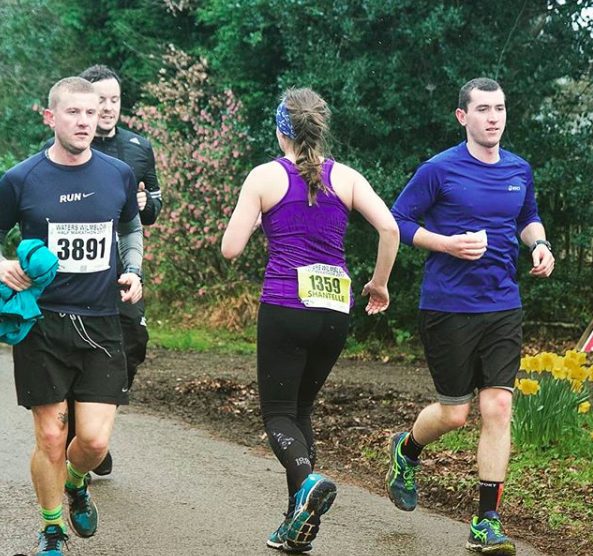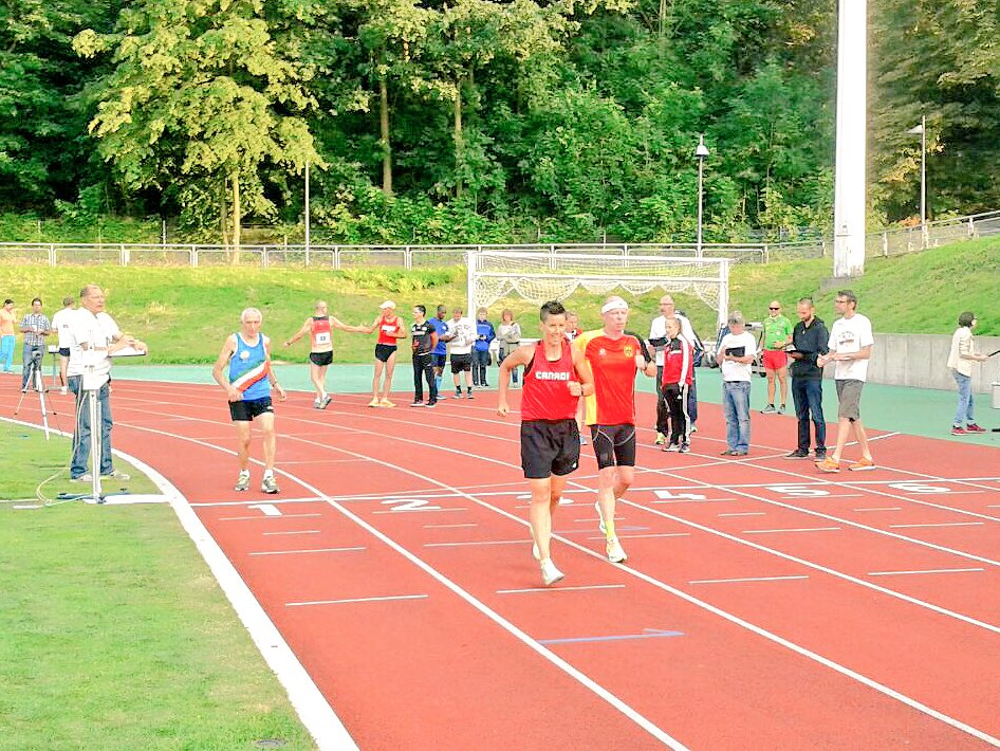Backwards running: when running forwards is not an option
For Justine Galloway of San Diego, running backwards is not a gimmick, but a necessity

Backwards running might strike you as a gimmick–something 0dd that certain runners do now and then, possibly to seek attention, or to bag a silly record. But for Justine Galloway of San Diego, who has twice held the Guinness World Record for the fastest half-marathon run backwards (female), it’s not silly at all, since there is simply no other way for her to run. Galloway, 39, has focal dystonia, a neurological condition that occasionally strikes runners, musicians and others accustomed to regular and repeated movements of certain muscle groups, causing involuntary muscle contractions and abnormal movements. By age 30, Galloway, who ran in college and had since run seven marathons (including two Boston Marathon finishes) could no longer run–at least, not forwards.
https://www.instagram.com/p/ByRclfHHpH9/
Getting an accurate diagnosis took a long time and multiple visits to a long series of specialists. At first Galloway’s doctors thought it might be multiple sclerosis, or possibly early-onset Parkinson’s (which her father had). During physical therapy, she was able to train herself to walk without discomfort. Running forwards was impossible, but surprisingly, running backwards was no problem. She’s now running 25 or 30 miles a week, backwards. “I’m just happy that I’m out there running,” says Galloway, who upon realizing she could no longer run, moved from New Jersey to San Diego so she could swim and bike outdoors year-round, though eventually she found she preferred backwards running to ocean swimming. “I get to do what I love, and I have running friends.”
RELATED: North Carolina man completes backwards marathon–at almost 60
https://www.instagram.com/p/Bk8OQZ8gfM4/
Galloway currently holds the Guinness World Record for the fastest half-marathon run backwards, for the second time. She first broke the record in 2015 with a 2:46 at the Rock n Roll San Diego half, after it had stood at 2:49 for many years. Two years later, sports therapist Shantelle Gaston-Hird of Manchester, UK set a new record of 2:27:09. Then in January 2019, Galloway reclaimed the record at the Carlsbad Half-Marathon in California in 2:19:45. Gaston-Hird is now training for the Manchester Half-Marathon on October 13, where she will attempt to reclaim the record. She is also looking forward to participating in the Retro Running World Championships in London, UK in July 2020. She has reached out to Galloway and invited her to participate, but Galloway says she’s no longer interested in running competitively.
https://www.instagram.com/p/B0kzgAzHF28/
“When I broke it (the world record), I didn’t know there was a (backwards running) community,” says Galloway. “I don’t want to get in my head about trying to beat someone. In high school and college and marathon running I was super competitive, but now I run because I can. I had to remove myself from being completely obsessed with running because I couldn’t run forward, and I don’t want to get like that again. I was training 40 to 80 miles a week before, when I was running forwards. If I didn’t run, I was devastated. I don’t want that to be why I run now. I run backwards because I love running, it’s the only way I can run, and I am not ready to give up running yet. I hope to beat my time, but just because I want to improve on what I have already done.”
https://www.instagram.com/p/B0WG36Ynh5K/
For her part, before becoming a backwards runner (or retro runner, as it’s referred to internationally), Gaston-Hird, 33, was a roller-derby enthusiast and runner. She’s completed five marathons and eight ultras, and in 2017 she climbed Mount Kilimanjaro and completed Britain’s National 3 Peak Challenge (Ben Nevis, Scafell Pike and Mount Snowdon in under 24 hours). Retro running was something she did to be different, and to show the world that it’s OK to stand out from the crowd. Raised in a family of nine children, Gaston-Hird started running backwards in support of an anti-bullying charity. (“Who wants to be ‘normal’ anyway?” she asks, rhetorically.)
Here’s an entertaining video about Gaston-Hird’s retro running:
Gaston-Hird’s first backwards half-marathon was in 2014, and in March 2017 she broke Galloway’s Guinness record in her second retro-style half-marathon. Her goal time for Manchester is 2:10, 17 minutes faster than her 2017 time. “This is going to be really tough,” she said in an Instagram post in July.
In 2017 Gaston-Hird created a family-friendly event called the Retro Mile to encourage people to be active and to try something new. “It is also a fantastic rehabilitation and cross-training exercise,” she says of retro running, “but more importantly, it is fun.” She is also working with Manchester Metropolitan University to study the mechanics and physical benefits of retro running.

Canada has its very own backwards runner, Kat Clewley, who will also be going to the Retro Running World Championships and competing for the title in the half-marathon. Clewley ran a 4:48 marathon backwards at the Road2Hope in Hamilton in September, 2015. There is currently no Guinness World Record on the books for a backwards marathon run by a female. (According to the organization, the standard to beat is 4:42.) The men’s record of 3:43:39 was set by Xu Zhenjun of Beijing in 2004.
RELATED: Former Team Canada soccer player wins gold at world backwards running champs


